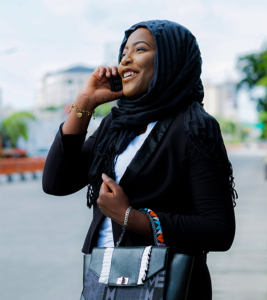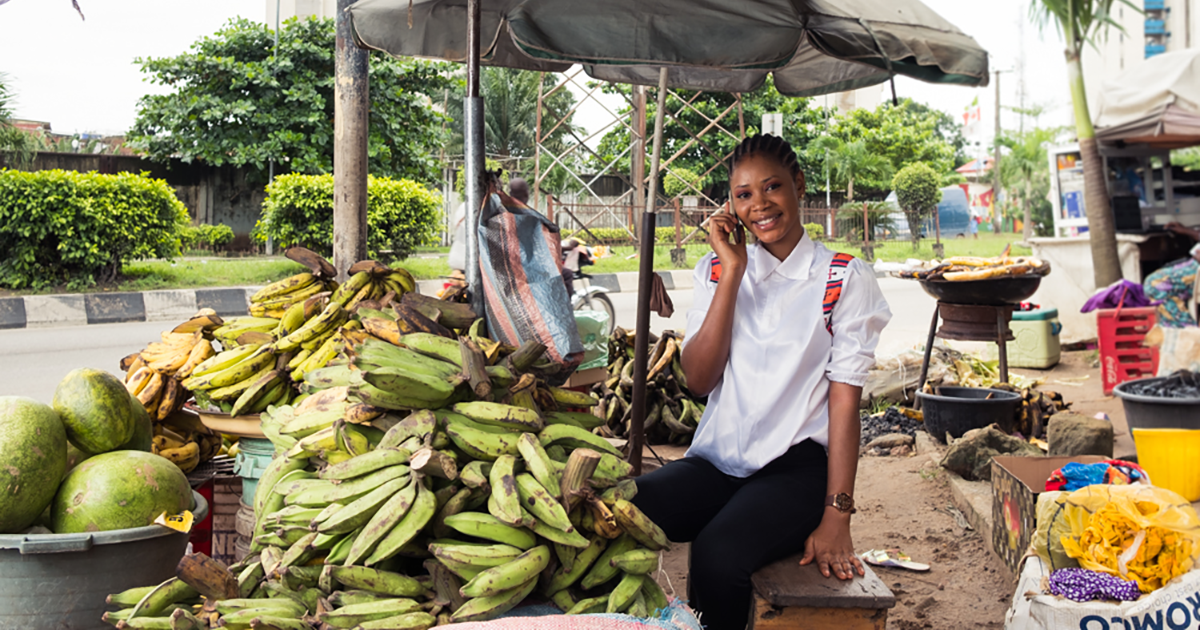
“I’m doing two lives on Wednesday,” says Vimbayi Kajese, “but I don’t know if they’re gonna like what I have to say.”
An expert on the topic of black representation, she’s the kind of public speaker that can both shake up an audience and give them goosebumps. The caveat?
She’s radically honest. Whether she’s talking to top senior executives at the World Economic Forum or students at Stanford, she refuses to tone down her message. She’s an activist and her cause—saving black lives through representation—is too vital for that.
She admits that speaking out about racial injustice can be draining, especially in reaction to tragedies such as the killing of George Floyd.
She has a lot to say, but she doesn’t want to be the only vessel for her message. She thinks that the other vessel could be her startup, #Adtags.
Dreaming up #Adtags

The idea for #Adtags came to her in a dream: What if there was a platform to connect brands and black content creators? Brands need authentic images of people of color. People of color need not just to be represented, but to have a say in how.
In her TEDx talk, Vimbayi reminds us that the representation of black people is often limited, negative, and unambiguous.
“Black people aren’t granted nuance of feelings,” she told Tim Metz on Enabling Tomorrow. “They don’t show up in things that are happy; they don’t show up in things that are joyful; they don’t show up in things that have pride.”
She envisioned a platform where a black content creator could upload a photo of themselves and tag a brand. The brand would then have the option of buying the photo for commercial use.
In that sense, #Adtags would work similarly to stock photo websites such as Shutterstock and Getty Images, where companies buy photos and creators get instantly paid. But that’s as far as similarities go. In a way, #Adtags is the “anti-stock photo” photo platform, filling in the gap for unique photos of people of color made by people of color.
The journey there
Although she did wake up with the user journey for #Adtags entirely mapped out, the idea for the platform didn’t come out of the blue.
Vimbayi was born in Zimbabwe, but because her parents were diplomats, she lived all around Europe, Africa, and North America. Wherever she was, she was often the only black person, or the only Zimbabwean, in the room. “Representation is an issue that has always followed me. It’s a calling,” she says.
That calling was never as clear as when she joined China Central Television (CCTV) as their first black and African news anchor, speaking to an international audience of over 1 billion. Viewers who felt represented for the first time sent her messages saying she was an inspiration to them and a role model to their children. Because of her, the channel attracted unprecedented viewership from North America, Europe, and Africa.

After leaving CCTV, Vimbayi lived in different parts of West Africa, immersing herself in local cultures and discovering how black people in different countries perceived themselves. She saw the uniquely cool photos that her friends took and knew there was untapped potential there.
Finally, a stint in an advertising agency in South Africa showed her that advertising executives don’t always have a pulse on how young people engage with brands and products. And most of them don’t do a good job portraying black people in meaningful ways.
Collaboration with KaiOS
Meanwhile, KaiOS had an urgent need for high-quality images of Nigerians using KaiOS phones. Tim Metz, Marketing Director at KaiOS, had watched Vimbayi’s TEDx talk and reached out to see if she would help.
Vimbayi and her partner, Nic Rawhani, liked the idea and accepted the challenge of connecting KaiOS to African content creators to produce the photos.

Part of the job involved culturally interpreting KaiOS’s creative brief to make it resonate with diverse audiences in Nigeria.
The other was serving as a liaison between the photographers (or taggers, as they’re known in the platform) and KaiOS; negotiating terms and conditions; and creating the scenarios—all of it remotely and across multiple timezones.
“I couldn’t have done it without my strategic and creative advisor, Nic Rawhani; my legal team based in South Africa, headed by Chengetayi Mariti; and the help of my assistant Jemima Cortez, who beautifully executed scheduling in multiple time zones,” says Vimbayi.
The result was three sets of rare, beautiful images—the first showing people using smart feature phones to be available in an image library. One of them, by Nigerian photographer Emmanuel-King Itegboje, recently won a photo competition organized by The World Summit on the Information Society.
From Africa to Silicon Valley
Vimbayi recently relocated to California, where she’s in the process of transitioning #Adtags into a US-based company. She moved there to be around tech industry professionals and investors, the two kinds of people she is going to need to make her vision a reality.

Her vision: She wants 100 million pictures of people of color on billboards in the next ten years. She believes that exposure to images of people of color doing both ordinary and extraordinary things can help dismantle white supremacy.
Prior to the coronavirus outbreak, she was working from The Assembly, a women-centered coworking space in San Francisco. There, she spent a lot of time figuring out how to set up #Adtags to reflect her core values while complying with laws and regulations—not easy when you’re creating something entirely unique.
She knows for sure that she wants taggers to be well compensated. She also wants them to have the creative freedom to portray themselves authentically.
Most of all, she wants more images of black people and people of color everywhere. To her, it’s a matter of life or death.
Liked #Adtags’ mission? Check out their website and subscribe for updates.
Comments